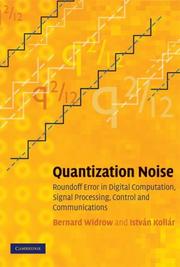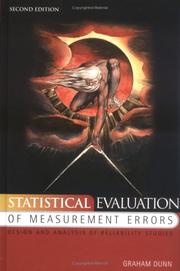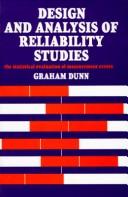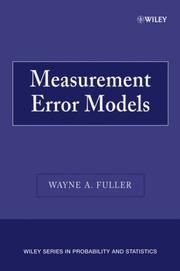| Listing 1 - 10 of 67 | << page >> |
Sort by
|
Book
ISBN: 1596933348 9781596933347 9781596933330 159693333X 9781596933347 Year: 2008 Publisher: Boston : Artech House,
Abstract | Keywords | Export | Availability | Bookmark
 Loading...
Loading...Choose an application
- Reference Manager
- EndNote
- RefWorks (Direct export to RefWorks)
Improve EM simulation efforts fast with this applications-focused resource. This unique volume is the first book on integral equation-based methods that combines quantitative formulas for predicting numerical simulation accuracy together with rigorous error estimates and results for dozens of actual electromagnetics and wave propagation problems. You get the latest insights on accuracy-improving methods like regularization and error-increasing effects such as edge singularities and resonance, along with full details on how to determine mesh density, choice of basis functions, and other parameters needed to optimize any numerical simulation. Bridging the gap between abstract academic treatments and the real-world needs of engineers, this timely work introduces various surface integral equation formulations, approaches to discretizing the integral equations, and measures of solution accuracy. It gives you numerical methods for 2D radiation and scattering problems, emphasizing concrete solution error bounds with exactly given constants. Moreover, the book provides techniques for higher order basis functions and 3D problems, focusing on smooth scatterers and edge singularity effects. This informative reference also explores problems involving resonant cavities and structures, and features a comprehensive treatment of resonant scatterers. The final chapter covers the convergence of the fast multipole method with iterative linear system solvers, complete with practical methods for improving the efficiency of iterative solutions.
Electromagnetism --- Error analysis (Mathematics) --- Errors, Theory of --- Instrumental variables (Statistics) --- Mathematical statistics --- Numerical analysis --- Statistics --- Mathematics.
Book
ISBN: 9780471827313 0471827312 Year: 1985 Publisher: New York (N.Y.) : Wiley,
Abstract | Keywords | Export | Availability | Bookmark
 Loading...
Loading...Choose an application
- Reference Manager
- EndNote
- RefWorks (Direct export to RefWorks)
Errors, theory of --- mensuration --- Estimation theory --- Error analysis (Mathematics). --- Estimation theory. --- Measurement.

ISBN: 9780521886710 9780511754661 9780511409905 0511409907 0521886716 0511408005 9780511408007 9780511408793 051140879X 1107186870 9781107186873 9786611717070 6611717072 0511409362 9780511409363 0511407262 9780511407260 0511754663 128171707X Year: 2008 Publisher: Cambridge New York Cambridge University Press
Abstract | Keywords | Export | Availability | Bookmark
 Loading...
Loading...Choose an application
- Reference Manager
- EndNote
- RefWorks (Direct export to RefWorks)
If you are working in digital signal processing, control or numerical analysis, you will find this authoritative analysis of quantization noise (roundoff error) invaluable. Do you know where the theory of quantization noise comes from, and under what circumstances it is true? Get answers to these and other important practical questions from expert authors, including the founder of the field and formulator of the theory of quantization noise, Bernard Widrow. The authors describe and analyze uniform quantization, floating-point quantization, and their applications in detail. Key features include: • Analysis of floating point round off • Dither techniques and implementation issues analyzed • Offers heuristic explanations along with rigorous proofs, making it easy to understand 'why' before the mathematical proof is given.
Roundoff errors. --- Roundoff errors --- Error analysis (Mathematics) --- Numerical analysis --- Errors, Theory of --- Instrumental variables (Statistics) --- Mathematical statistics --- Statistics
Book
ISBN: 128273234X 9786612732348 0191576565 9780191576560 9780199566334 019956633X 9781282732346 9780199566327 0199566321 6612732342 Year: 2010 Publisher: Oxford : Oxford University Press,
Abstract | Keywords | Export | Availability | Bookmark
 Loading...
Loading...Choose an application
- Reference Manager
- EndNote
- RefWorks (Direct export to RefWorks)
This short guide to modern error analysis is primarily intended to be used in undergraduate laboratories in the physical sciences. No prior knowledge of statistics is assumed. The necessary concepts are introduced where needed and illustrated graphically. The book emphasises the use of computers for error calculations and data fitting.
Error analysis (Mathematics) --- Mathematics. --- Math --- Science --- Errors, Theory of --- Instrumental variables (Statistics) --- Mathematical statistics --- Numerical analysis --- Statistics
Book
ISBN: 1280613432 9786610613434 038723537X Year: 2005 Publisher: New York : Springer Science,
Abstract | Keywords | Export | Availability | Bookmark
 Loading...
Loading...Choose an application
- Reference Manager
- EndNote
- RefWorks (Direct export to RefWorks)
This volume provides a posteriori error analysis for mathematical idealizations in modeling boundary value problems, especially those arising in mechanical applications, and for numerical approximations of numerous nonlinear variational problems. The author avoids giving the results in the most general, abstract form so that it is easier for the reader to understand more clearly the essential ideas involved. Many examples are included to show the usefulness of the derived error estimates. Audience This volume is suitable for researchers and graduate students in applied and computational mathematics, and in engineering.
Error analysis (Mathematics) --- Duality theory (Mathematics) --- Algebra --- Mathematical analysis --- Topology --- Errors, Theory of --- Instrumental variables (Statistics) --- Mathematical statistics --- Numerical analysis --- Statistics
Book
ISBN: 9780521134927 9780521119405 0521134927 0521119405 9780511921247 9781139079822 1139079824 9781139077538 1139077538 9781139082099 1139082094 0511921241 1107083427 110721310X 1283110903 1139075276 9786613110909 1139069500 9781107083424 9781283110907 9781139075275 6613110906 9781139069502 Year: 2011 Publisher: Cambridge Cambridge University Press
Abstract | Keywords | Export | Availability | Bookmark
 Loading...
Loading...Choose an application
- Reference Manager
- EndNote
- RefWorks (Direct export to RefWorks)
"All students taking laboratory courses within the physical sciences and engineering will benefit from this book, whilst researchers will find it an invaluable reference. This concise, practical guide brings the reader up-to-speed on the proper handling and presentation of scientific data and its inaccuracies. It covers all the vital topics with practical guidelines, computer programs (in Python), and recipes for handling experimental errors and reporting experimental data. In addition to the essentials, it also provides further background material for advanced readers who want to understand how the methods work. Plenty of examples, exercises and solutions are provided to aid and test understanding, whilst useful data, tables and formulas are compiled in a handy section for easy reference"--
Error analysis (Mathematics) --- Erreurs, Théorie des --- Error analysis (Mathematics). --- Erreurs, Théorie des --- wetenschappelijk onderzoek --- Science --- Errors, Theory of --- Instrumental variables (Statistics) --- Mathematical statistics --- Numerical analysis --- Statistics

ISBN: 9780340760703 0340760702 Year: 2004 Publisher: London Hodder Arnold
Abstract | Keywords | Export | Availability | Bookmark
 Loading...
Loading...Choose an application
- Reference Manager
- EndNote
- RefWorks (Direct export to RefWorks)

ISBN: 0852642970 0195207041 9780852642979 9780195207040 Year: 1989 Publisher: London Arnold
Abstract | Keywords | Export | Availability | Bookmark
 Loading...
Loading...Choose an application
- Reference Manager
- EndNote
- RefWorks (Direct export to RefWorks)

ISBN: 0470095717 9780470095713 Year: 2006 Publisher: Hoboken, N.J. Wiley
Abstract | Keywords | Export | Availability | Bookmark
 Loading...
Loading...Choose an application
- Reference Manager
- EndNote
- RefWorks (Direct export to RefWorks)
Error analysis (Mathematics) --- Regression analysis --- Analysis, Regression --- Linear regression --- Regression modeling --- Errors, Theory of --- Mathematical statistics --- Multivariate analysis --- Structural equation modeling --- Instrumental variables (Statistics) --- Numerical analysis --- Statistics
Book
ISBN: 9780191668760 0191668761 9780191668777 019166877X 9780191758485 0191758485 0199679428 9780199679423 0198743483 1299394558 9780198743484 9781299394551 Year: 2013 Publisher: Oxford, UK Oxford University Press
Abstract | Keywords | Export | Availability | Bookmark
 Loading...
Loading...Choose an application
- Reference Manager
- EndNote
- RefWorks (Direct export to RefWorks)
Self-adaptive discretization methods are now an indispensable tool for the numerical solution of partial differential equations that arise from physical and technical applications. The aim is to obtain a numerical solution within a prescribed tolerance using a minimal amount of work. The main tools in achieving this goal are a posteriori error estimates which give global and local information on the error of the numerical solution and which can easily be computed from the givennumerical solution and the data of the differential equation. This book reviews the most frequently used a posteriori
Error analysis (Mathematics) --- Finite element method. --- FEA (Numerical analysis) --- FEM (Numerical analysis) --- Finite element analysis --- Numerical analysis --- Isogeometric analysis --- Errors, Theory of --- Instrumental variables (Statistics) --- Mathematical statistics --- Statistics
| Listing 1 - 10 of 67 | << page >> |
Sort by
|

 Search
Search Feedback
Feedback About UniCat
About UniCat  Help
Help News
News